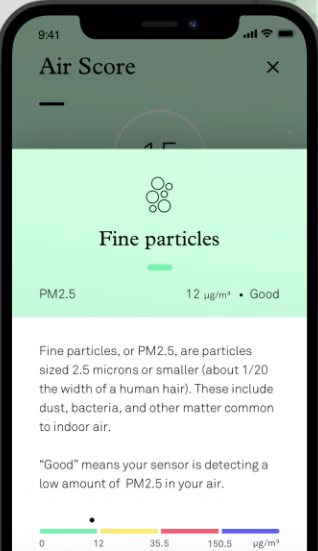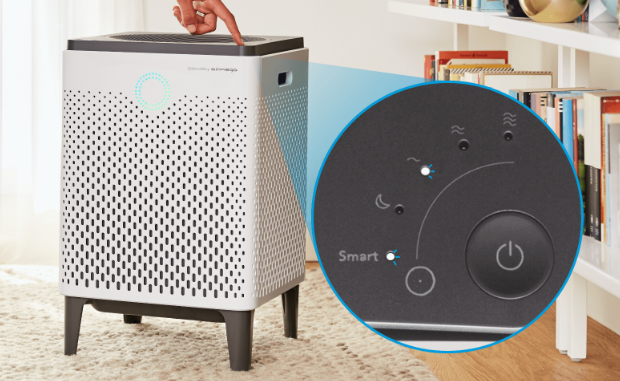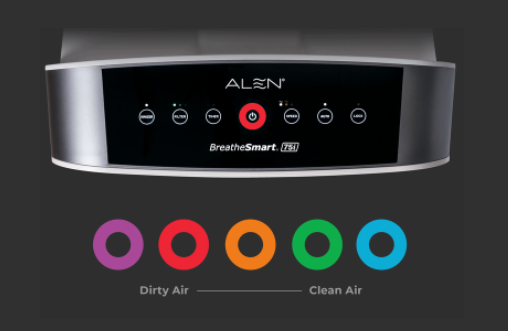Air purifiers improve air by removing pollutants and ventilating indoor spaces. Some air purifiers are equipped to detect air quality—the sensors in such purifiers measure and report air quality in your home. But the most common question is: how do air purifiers measure air quality?
An air purifier constantly monitors and reports air quality to let you know when the air quality becomes poor. Most air purifiers monitor air quality in real-time and automatically adjust the fan’s speed.
Apart from that some of the best air purifiers have air quality indicators that show you how clean or dirty the air is. This could be in form of a digital scale showing the amount of PM (particulate matter) in the air or rings that change colour depending on air quality.
First, let’s take a look at the technology used in monitoring air quality.
The Technology
Air purifiers have inbuilt sensors for this task. The sensors vary from one air purifier to another but often detect gases, temperature, humidity, and particulate matter. Some sensors operate with infrared and laser beams to provide you with an air quality evaluation.
As particles move around the air purifier, they absorb some amount of infrared or laser light. The sensor registers the absorption level, indicating the air pollution level in your home.
To fully understand how air purifier sensors measure air quality, you should know the different types of sensors that exist. There are two standard air quality sensors: PM (particulate matter) and gas.
PM sensors
Particulate matter(PM) is a mixture of airborne solid particles and liquid droplets which can cause allergic reactions and other health problems when inhaled. The particles vary in size, shape, composition, and optical properties.
Air purifiers use a standard nomenclature, PMx, to define the particle size with x as the airborne particle’s maximum diameter in microns. For example, PM2.5 defines airborne particles with a diameter of 2.5 microns and PM10 with a diameter of 10 microns.
PM sensors measure the concentration of particles with a diameter up to PM10.

Here are the different types of pollutants in the air that you breathe and the PM group they belong to:
- Mould (<PM10)
- Pollen (<PM10)
- Dust (<PM10)
- Smoke (<PM 2.5)
- Organic compounds (<PM 2.5)
Most PM sensors use infrared technology to detect PM2.5 particles and laser beams to measure PM10 particle accumulation.
Gas sensors
Gases are the most common pollutants in our homes. But with an air purifier that has a gas sensor, it is easy to monitor the pollution levels in your home. The gas sensors measure the levels of dangerous gases, including volatile organic compounds (VOCs).
These are the most common gases measured:
- Benzene (C6H6)
- Carbon Monoxide (CO)
- Hydrogen Sulphide (H2S)
- Methane (CH4)
- Nitrogen Dioxide (NO2)
- Ozone (O3)
- Sulphur Dioxide (SO2)
Fans Automatically Adjust
After detecting the concentration of airborne pollutants, air purifiers automatically adjust the fans’ speed. The fans adjust from high to low speeds depending on the air quality. However, this is not a common feature and you must ensure that you check whether you’re preferred option has it.
The fan speed automatically changes when you select Auto mode. Therefore, also confirm that your purifier of choice has Auto mode in its arsenal.

Besides that, you may want to get an air purifier that has an AQI (Air Quality Indicator). This will help you to know how dirty or clean the air is. If you hadn’t selected Auto mode, you can then ramp up the fan speed manually.
Conclusion
Are air purifier sensors worth it? Yes. The best quality of an air purifier sensor is to adjust the fan speed to maintain healthy air quality throughout the day. Besides, the units work in real-time to provide visual confirmation of air quality changes in your room.
The downside is that the lower-end air purifiers do not have this feature. So, if you want an air purifier that can measure particulate matter and VOCs, go for middle to high-end products. Remember, the best way to improve your indoor air quality is to purchase a top-quality air purifier.

